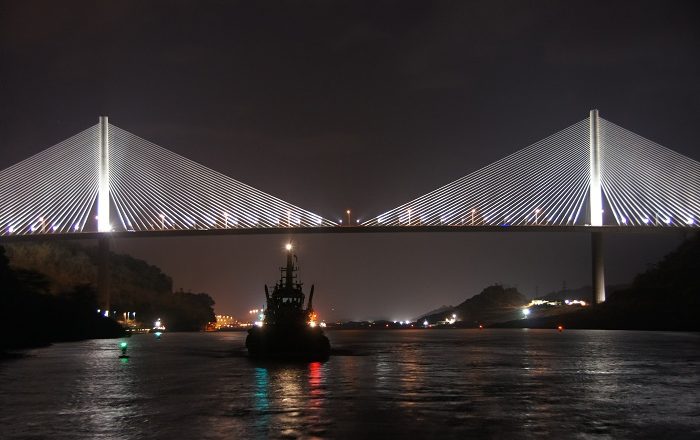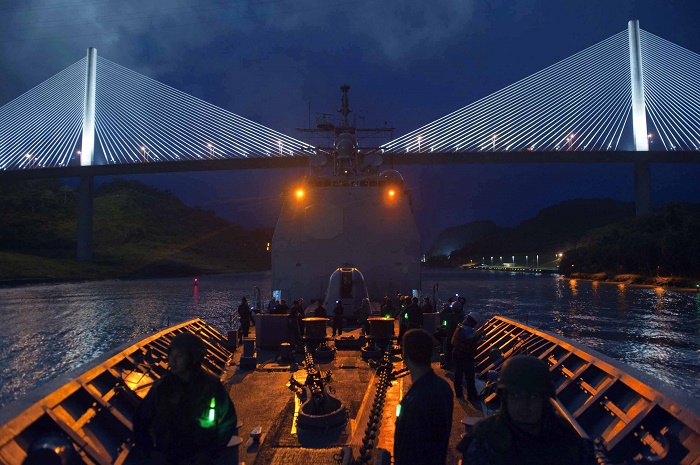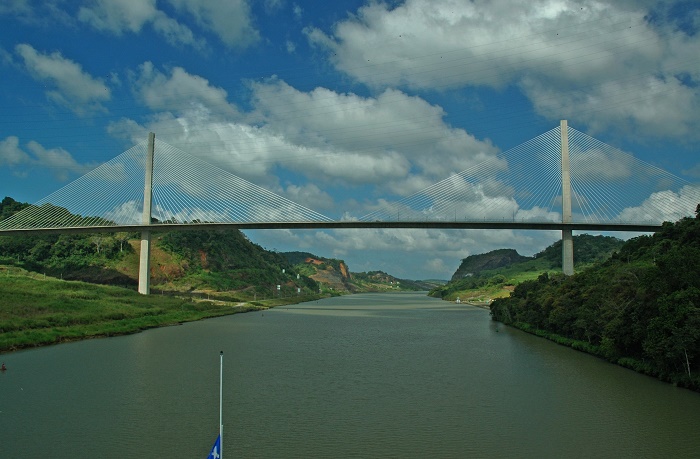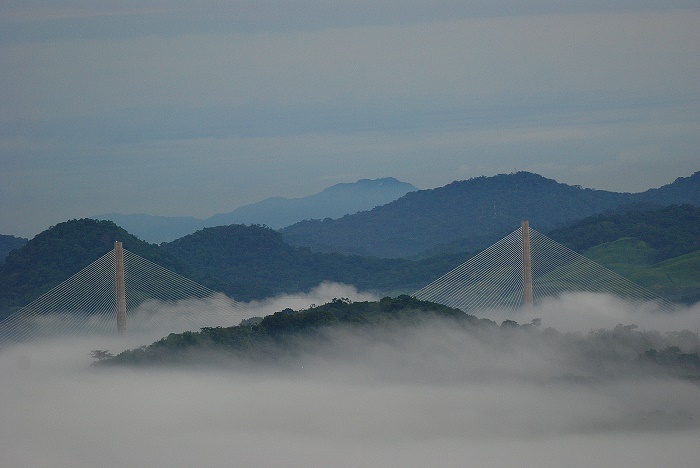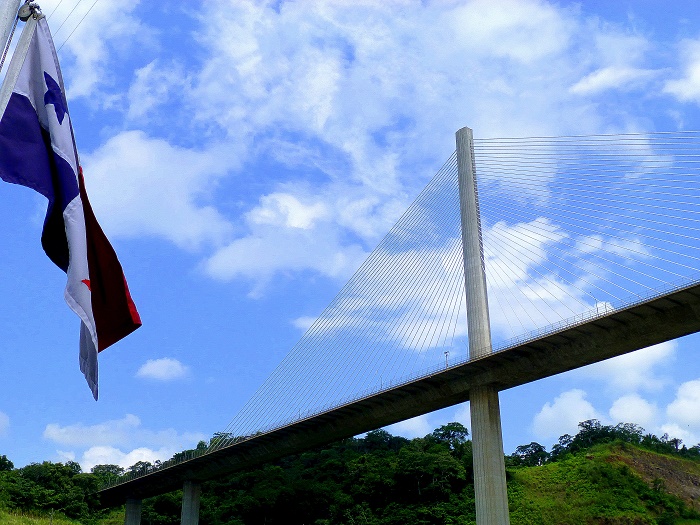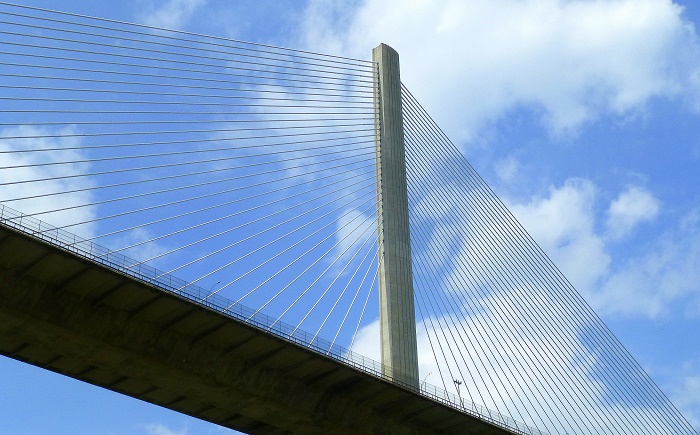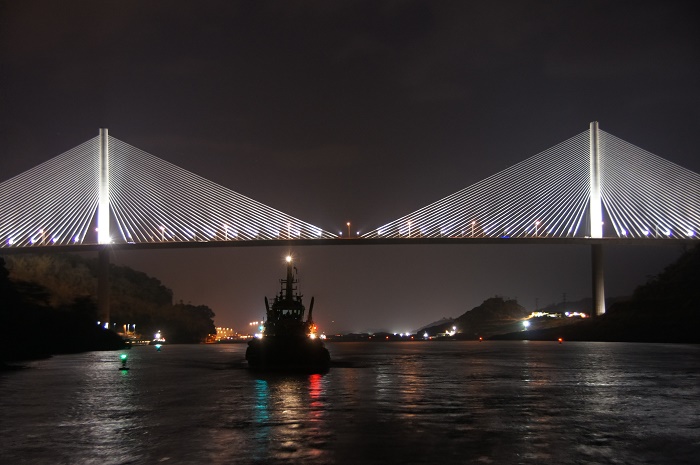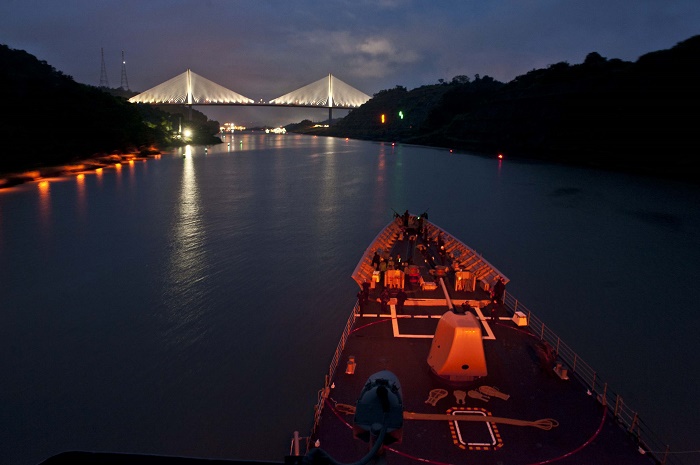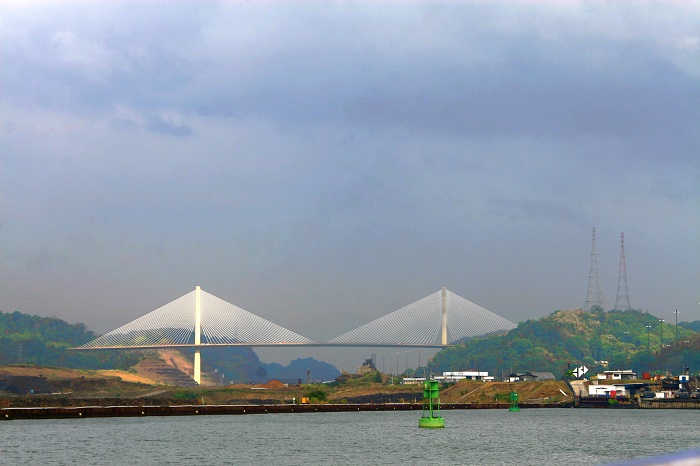The Centennial Bridge, also known as Puente Centenario, is an important and major bridge crossing which is located above the very important Panama Canal, which is within the Republic of Panama.
This cable-stayed bridge has been built in 2004, in order to supplement the overcrowded Bridge of the Americas, which is much closer to the capital city, Panama City. Both bridges nowadays are the only permanent crossings of the canal, in addition to a smaller ones who are not in use most of the time.
There are 6 lanes for traffic, where the total length of the Centennial is measured at 1,052 meters (3,451 feet), with a clearance of 80 meters (262 feet) below the bridge. There are two 184 meters (604 feet) towers on each side of the bridge, and in between is actually located the main span which is 420 meters (1,380 feet).
Designed by a joint venture between T.Y. Lin International and the Louis Berger Group Inc, it was constructed by German-based Bilfinger Berger using resources from its Australian subsidiary Baulderstone Hornibrook, whereas the concept and initial aesthetic designs for the bridge was carried out by the Boston-based transportation architect Miguel Rosales from Rosales + Partners.
The entire structure is designed to withstand strong earthquakes which unfortunately are frequently recorded in the canal area. Nonetheless, the Centennial Bridge got its name from Panama’s centennial independence which occurred on 3 November 2003, and with the 120 million dollars invested in this structure, the crossing of the Panama Canal is definitely easier and faster.

